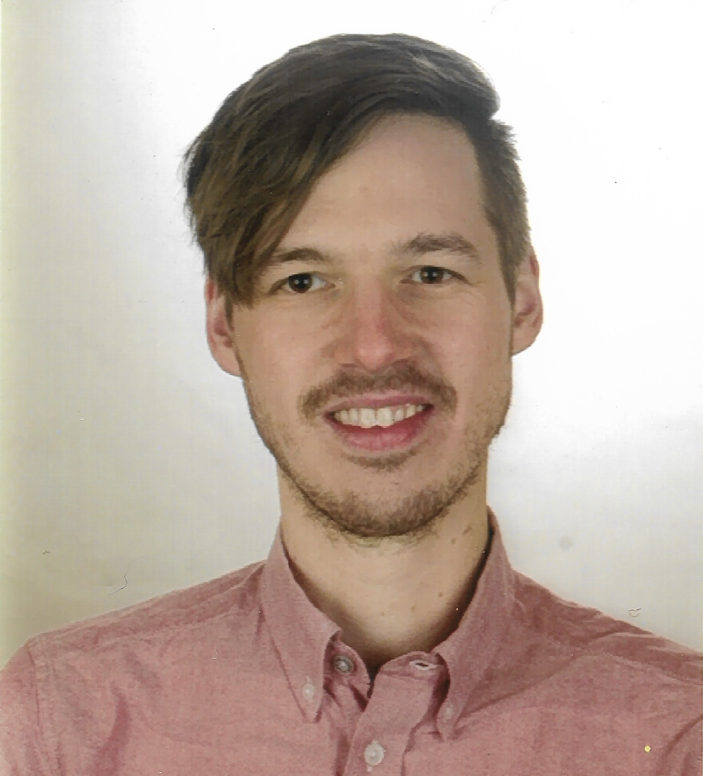
Prize winner
The 2015 Schering Prize is awarded to Dr. Stephan Warnke for his dissertation on “A Gas-Phase Approach to Biomolecular Structure: Combining Ion Mobility-Mass Spectrometry with Spectroscopy,” which he completed at the Freie Universität Berlin under the supervision of Prof. Dr. Kevin Pagel.
Stephan Warnke (born 1985) received his diploma in physics from the University of Tübingen in 2009 after completing a year of undergraduate research at the Fritz Haber Institute of the Max Planck Society in Berlin. As a graduate student at the same Institute in the groups of Dr. Gert von Helden and Prof. Dr. Kevin Pagel, his main focus was on the design and construction of a new instrument that combines the experimental methods of ion mobility-mass spectrometry and IR spectroscopy to perform in-depth structural analyses of biologically relevant molecules.
In his PhD thesis entitled “A Gas-Phase Approach to Biomecular Structure: Combining Ion Mobility-Mass Spectrometry with Spectroscopy,” he demonstrated how the combined methods can be applied to answer questions in a broad range of fields, from structural biology to physical chemistry. As a graduate student he authored four scientific publications and was furthermore involved in the authorship of a total of eleven publications. He graduated summa cum laude from the Institute of Chemistry and Biochemistry of the Freie Universität Berlin in 2015. As a postdoctoral researcher in the group of Dr. Gert von Helden, his current research focuses on peptide and protein structure and on non-covalently bound molecular aggregates with biological relevance.
About the dissertation
Proteins are the molecular machines that carry out vital tasks in a living organism. The structure and function of proteins are closely connected. Consequently, a detailed knowledge about molecular structure is essential to understand the biochemical processes on a molecular level. In their native environment, i.e. in solution, structural investigation of proteins is difficult as the molecules are in permanent interaction with their surroundings. The gas phase, on the other hand, offers a unique clean room environment that allows the investigation of isolated species, free from external influences. Established methods from mass spectrometry (MS) can be combined with ion mobility spectrometry (IMS), to separate protein ions by their size and shape. Structural details of shape-selected ions can then be obtained by infrared (IR) spectroscopy.
A central component of the thesis ‘A Gas-Phase Approach to Biomolecular Structure: Combining Ion Mobility-Mass Spectrometry with Spectroscopy’ is the development, characterization, and establishment of a new experimental setup that combines these structure-sensitive gas-phase methods. This facilitates in-depth structural investigations on different isolated conformers, isomers, or oligomers of protein ions and other biologically relevant molecules that can otherwise not be investigated in the condensed phase due to their short life times or heterogeneity. Using this novel instrument, it was for the first time possible to investigate the three-dimensional structure of peptide aggregates that play a role in neurodegenerative diseases like Alzheimer’s or Parkinson’s disease. In the disease case, the associated peptides undergo a transition from their native, partially folded form into insoluble aggregates that are rich in highly ordered β-sheet structures. Such aggregates can be found, for example, as insoluble plaques in brain tissue of Alzheimer’s patients. The toxic species in light of these neurodegenerative diseases are not the insoluble plaques but small, highly dynamic oligomers of largely unknown structure. The combined mass and size-selective IR spectroscopic approach could here be used to show that already these small soluble oligomers can contain a significant amount of the highly regular β-sheet structure that can be found in the larger, insoluble peptide assemblies. Ultimately, these results open new paths in the structural investigation of amyloidogenic peptides.
Side events
Award ceremony
November 11, 2016, 4–7 p.m.
Schering Prize 2015 and Bohlmann Lecture 2016
Technical University of Berlin
Lecture Hall C 130 (Old Chemistry Building)
Straße des 17. Juni 115 | 10623 Berlin
Bohlmann Lecture 2016
You might also be interested in
Newsletter
Contact & social networks
Schering Stiftung
Unter den Linden 32-34
10117 Berlin
Telefon: +49.30.20 62 29 62
Email: info@scheringstiftung.de
Opening hours
Project space
Thursday to Monday: 1 pm - 7 pm
Saturday to Sunday: 11 am - 7 pm
free entrance
